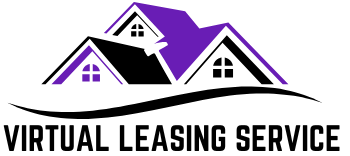In recent years, the rise of virtual leasing in the real estate industry has witnessed a significant transformation, with virtual leasing emerging as a revolutionary trend. This shift is reshaping how properties are marketed, viewed, and leased, offering numerous benefits to both property managers and prospective tenants.
The rise of virtual leasing marks a new era in real estate, characterized by increased convenience, efficiency, and accessibility. The concept of virtual leasing encompasses a variety of digital tools and techniques designed to streamline the leasing process. From virtual tours and 3D floor plans to online applications and digital lease signing, these innovations provide a seamless experience for users.
One of the most significant advantages of virtual leasing is its ability to offer prospective tenants an immersive and interactive property viewing experience without the need for physical visits. This not only saves time and resources but also makes it possible for people to explore properties from the comfort of their homes, regardless of their geographical location.
The Rise of Virtual Leasing a New Era in Real Estate

The COVID-19 pandemic has been a major catalyst in accelerating the adoption of virtual leasing. As social distancing measures and lockdowns restricted in-person interactions, property managers and real estate agents had to find alternative ways to showcase properties and conduct business. Virtual leasing emerged as the ideal solution, allowing the industry to continue functioning despite the challenges posed by the pandemic.
Even as the world gradually returns to normalcy, the benefits Rise of Virtual Leasing have become evident, ensuring its continued popularity and growth. One of the key components of virtual leasing is the virtual tour. These tours provide a realistic and detailed view of a property, often enhanced with features like 360-degree views and interactive elements.
Prospective tenants can navigate through rooms, zoom in on details, and get a true sense of the space, all from their computer or mobile device. This level of detail and engagement helps build confidence in potential renters, making them more likely to proceed with a lease. Moreover, virtual tours can be accessed at any time, offering flexibility that traditional open houses and scheduled viewings cannot match.
Embracing Digital Tools in Real Estate

The concept of virtual leasing encompasses a variety of digital tools and techniques designed to streamline the leasing process. From virtual tours and 3D floor plans to online applications and digital lease signing, these innovations provide a seamless experience for users.
One of the most significant advantages Rise of Virtual Leasingis its ability to offer prospective tenants an immersive and interactive property viewing experience without the need for physical visits. This not only saves time and resources but also makes it possible for people to explore properties from the comfort of their homes, regardless of their geographical location.
The Power of Virtual Tours
One of the key components rise of virtual leasing is the virtual tour. These tours provide a realistic and detailed view of a property, often enhanced with features like 360-degree views and interactive elements. Prospective tenants can navigate through rooms, zoom in on details, and get a true sense of the space, all from their computer or mobile device.
This level of detail and engagement helps build confidence in potential renters, making them more likely to proceed with a lease. Moreover, virtual tours can be accessed at any time, offering flexibility that traditional open houses and scheduled viewings cannot match.
Enhancing Visualization with 3D Floor Plans
In addition to virtual tours, 3D floor plans have become an essential tool in the virtual leasing toolkit. These floor plans provide an accurate representation of the property’s layout, helping tenants visualize the space and understand how their furniture and belongings might fit. Combined with virtual tours, 3D floor plans offer a comprehensive view of the property, addressing any potential concerns or questions that prospective tenants might have.
Streamlining the Leasing Process
The integration of online applications and digital lease signing further enhances the rsie of virtual leasing experience. These features streamline the administrative aspects of leasing, reducing paperwork and making the process more efficient.
Prospective tenants can submit applications, provide necessary documentation, and sign leases electronically, all from the convenience of their devices. This not only speeds up the leasing process but also reduces the likelihood of errors and lost paperwork.
Benefits for Property Managers and Agents
Rise of Virtual Leasing also offers significant advantages to property managers and real estate agents. By leveraging digital tools, they can reach a wider audience and market properties more effectively. High-quality virtual tours and 3D floor plans can be shared on websites, social media, and listing platforms.
Attracting more potential tenants and increasing occupancy rates. Additionally, the ability to conduct virtual cosulatation viewings and process applications online reduces the need for physical office space and in-person staff, leading to cost savings and increased operational efficiency.
A Paradigm Shift in the Real Estate Industry

As the real estate industry continues to evolve, the rise of virtual leasing represents a paradigm shift in how properties are leased. The combination of convenience, efficiency, and accessibility makes it a compelling option for both tenants and property managers.
While traditional leasing methods are unlikely to disappear entirely, the integration Rise of Virtual Leasing practices is set to become a standard in the industry. Embracing this technological advancement will not only enhance the leasing experience but also ensure that the real estate industry remains resilient and adaptable in the face of future challenges.
Virtual Leasing Success Key Strategies for Achieving Optimal Results
The rise of virtual leasing has become an integral part of the real estate industry, and the importance of implementing effective strategies to ensure success cannot be overstated. Property managers and real estate agents who embrace and optimize virtual leasing tools can achieve remarkable results, enhancing both tenant satisfaction and business outcomes. Here, we explore key strategies for achieving success with virtual leasing, focusing on creating engaging virtual experiences, leveraging technology, and maintaining strong communication.
Creating Engaging Virtual Experiences
The foundation rise of virtual leasing success lies in creating engaging and immersive virtual experiences for prospective tenants. High-quality virtual tours and 3D floor plans are essential components of this strategy. Investing in professional photography and videography can make a significant difference, ensuring that properties are showcased in the best possible light.
- High-Quality Virtual Tours: Utilize the rise of virtual leasing technology to create 360-degree virtual tours that allow prospective tenants to navigate properties at their own pace. Ensure that the tours are detailed and interactive, with options to zoom in on specific features and view multiple angles of each room.
- Interactive 3D Floor Plans: Provide accurate and visually appealing 3D floor plans that help tenants visualize the layout and dimensions of the property. These plans should be easy to navigate and offer detailed information about each area of the property.
- Virtual Staging: Consider using virtual staging to furnish empty properties digitally. This can help tenants envision how the space can be utilized and make the property more appealing.
Leveraging Technology for Efficiency
Effective use of technology is crucial for streamlining the rise of virtual leasing process and enhancing overall efficiency. By integrating various digital tools, property managers can simplify tasks and improve the tenant experience.
- Online Applications and Digital Leasing: Implement online application systems that allow prospective tenants to submit applications and required documents digitally. This not only speeds up the process but also reduces paperwork and administrative burdens.
- Automated Communication: Use automated communication tools to keep prospective tenants informed throughout the leasing process. Automated emails and messages can provide updates on application status, reminders for viewing appointments, and notifications about new listings.
- Virtual Open Houses and Live Tours: Host virtual open houses and live tours using video conferencing platforms. This enables real-time interaction with potential tenants, allowing them to ask questions and receive immediate responses.
Maintaining Strong Communication
Clear and consistent communication is vital for building trust and ensuring a positive leasing experience. Property managers should prioritize responsive and transparent communication with prospective tenants.
- Personalized Follow-Ups: After virtual tours or open houses, follow up with personalized messages to address any questions or concerns the prospective tenants may have. This demonstrates attentiveness and can help build a positive relationship.
- Accessible Contact Options: Provide multiple contact options, including phone, email, and chat, to accommodate different preferences. Ensure that these channels are monitored regularly and that responses are prompt.
- Detailed Property Information: Offer comprehensive information about the property, including amenities, neighborhood details, and rise of virtual leasing terms, both on the website and during virtual tours. This helps tenants make informed decisions and reduces the need for back-and-forth inquiries and landlord resources.
Utilizing Data and Analytics
Leveraging data and analytics can provide valuable insights into the effectiveness rise of virtual leasing strategies and help identify areas for improvement.
- Tracking Engagement Metrics: Monitor metrics such as the number of virtual tour views, application submissions, and website visits to gauge interest and engagement. This data can help refine marketing strategies and optimize property listings.
- Feedback Collection: Collect feedback from prospective tenants who participate in virtual tours and online applications. Use this feedback to identify pain points and enhance the Rise of Virtual Leasing experience.
- Performance Analysis: Regularly analyze the performance of virtual leasing campaigns to determine which strategies are most effective. Adjust marketing efforts based on this analysis to maximize results.
Building a Strong Online Presence
A strong online presence is essential for attracting prospective tenants and promoting properties effectively.
- Professional Website: Ensure that the property management website is user-friendly, visually appealing, and optimized for mobile devices. Include high-quality images, virtual tours, and detailed property information.
- Social Media Marketing: Leverage social media platforms to reach a broader audience. Share virtual tours, property highlights, and leasing opportunities on platforms like Facebook, Instagram, and LinkedIn.
By implementing these strategies, property managers and real estate agents can achieve significant success with Rise of Virtual Leasing.The combination of engaging virtual experiences, efficient technology, strong communication, data-driven insights, and a robust online presence will not only enhance the leasing process but also set the stage for long-term success in the evolving real estate landscape.
Frequently Asked Questions (FAQ’s)
Are there any drawbacks to virtual leasing?
While rise of virtual leasing offers many benefits, some tenants may still prefer in-person tours to get a better feel for the property. Additionally, technological issues or a lack of digital literacy can pose challenges for some users.
How can property managers market virtual tours effectively?
Property managers can market virtual tours through their websites, social media, and listing platforms. High-quality visuals and interactive features should be highlighted to attract prospective tenants.
What is the future? The rise of virtual leasing?
The future of virtual leasing looks promising, with continuous advancements in technology making the process even more seamless and immersive. As digital tools become more sophisticated, virtual leasing is likely to become a standard practice in the real estate industry.
What should I look for in a virtual leasing platform?
Look for a platform that offers high-quality virtual tour capabilities, secure online applications, digital lease signing, and good customer support. The platform should be user-friendly and compatible with various devices.
Can virtual leasing handle the entire leasing process?
Yes, virtual leasing can handle the entire process, from property viewing to lease signing. Prospective tenants can tour properties, submit applications, and sign leases all online.
Conclusion
The rise of virtual leasing indicates a significant transition in the real estate market, fueled by technological advancements and evolving consumer expectations. Tenant resources offering a seamless, efficient, and convenient leasing experience, virtual leasing benefits both tenants and property managers. With the ability to conduct immersive virtual tours, process applications online, and sign leases digitally.
This innovative approach is set to become a standard practice, ensuring that the industry remains adaptable and resilient in the face of future challenges. As we move forward, embracing virtual leasing will continue to enhance the way properties are marketed, viewed, and leased, setting a new benchmark for excellence in real estate.



Add a Comment